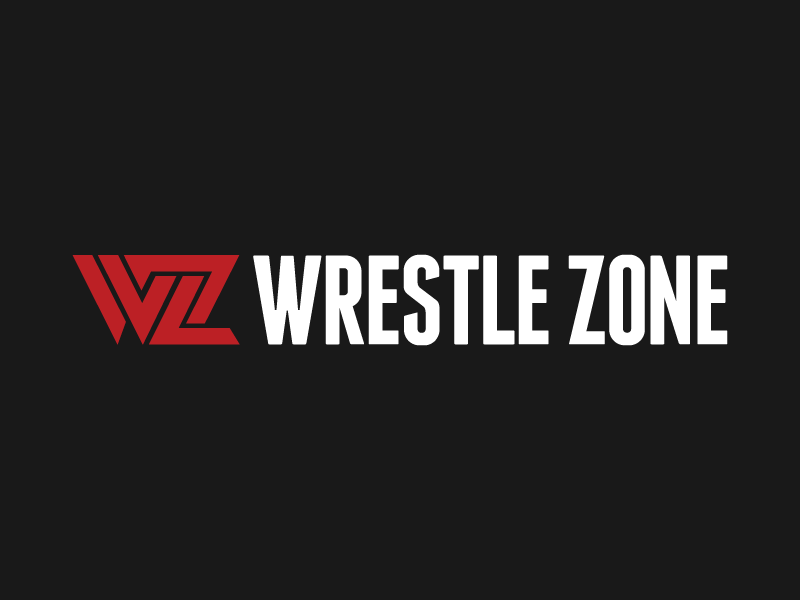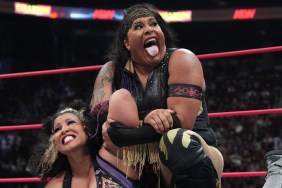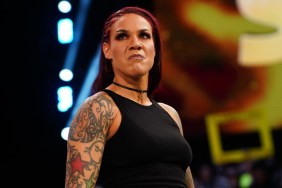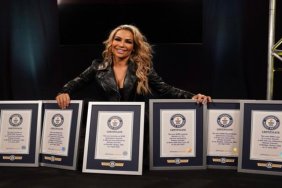Two letters decide the course of a person’s life, with or without one or the other; one may experience the world entirely different than if they had received a different combination of letters. X and Y, the two chromosomes that are responsible for the gender of a human. Males have one X chromosome and one Y chromosome, whilst for females it is two X chromosomes. One lone Y chromosome is responsible for the role a baby, to an eventual adult, will have in the great mechanics of life. Throughout history, the same Y has been responsible for a person being denounced as a commodity, an object, and a second-class citizen; it is argued that this same prejudice remains to this day. Arguable as it may be, there is no doubt that aspects of life remain unequal in the roles expected of males and females. The gap of inequality has lessened as people began to acknowledge the prejudice, however select portions of the media have been slower in their response, none slower than the sporting arena.
Being a typically male directed sport, professional wrestling has always leaned towards a chauvinistic representation of entertainment, the male performers being the serious competitors, the centre of the company, whilst the female performers were sidekicks or sideshows. This school of thought is evident in almost all mainstream sports, where male leagues are more sponsored, more televised, and generally more recognised than the corresponding female leagues. Various reasons are given for this disparity, the most obvious being that the sporting arena is seen as the last remaining sanctuary of chauvinism, where for two halves or four quarters, men can enjoy the most primitive of urges, raw competition, without having to worry about new age restrictions and limitations. Also, on the whole, it is accepted that sport will never be as appealing to women as it is to the entire male population. However, the values of sport have not remained entirely untouched since the beginning of time, it too has adapted as the process of creating a gender equilibrium continued over the decades. This changing sporting role of women is evident in the way the role of women in the professional wrestling setting has moved from valet to competitor to both.
As professional wrestling moved out of the carnivals and into small arenas, becoming a national past time of America through the traveling stars of the NWA during the fifties and onward, the showmanship had to be modified for such an audience. So the strange and bizarre antics of the sideshow were toned down to palatable level for families. One such feature was women remaining a side act, as they were in the carnivals, but now exclusive to one performer, becoming a scantily clad mascot. This role has been consistent to the present day, remaining the primary role for women in the wrestling world. Sequined gowns, plunging necklines, stiletto heels, cascading blonde locks, women of the wrestling world are pin-ups, acting as the beauty against the beasts.
The requirements and purpose of valet-style women characters has remained the same as professional wrestling changed around them. There are several roles they play, the most superficial being mentioned previously, as a way of ‘masculinising’ the sport further. Without titillating valets, wrestling would be men watching men wrestling with other men. The blonde bombshells, with little time for personality and intelligence, are the barrier ensuring the audience of their heterosexuality. Simply by appearing in the vicinity of a wrestling program they achieve the desired effect, but in a move to justify their existence, valets over the years have been given roles to play in the mechanics of the business. Valets, as their names suggest, escort stars before, during and after their bouts, attracting attention to the male performer. Effectively, a big-breasted female can draw attention to an otherwise bland athlete simply by standing near him. This has been used to great success over the years, generating importance for the male character, and kick starting his rise to fame. In other cases, the valet has outshone the star in which she was valeting, and became the centerpiece of the group, the woman being promoted to a more important role in the promotion.
Valet characters have also become instrumental in storylines over the years, becoming a disadvantage to the wrestler, the one thing keeping him from achieving the goals he so obviously deserves. So in most cases, storyline-wise, a valet becomes a thorn in the side of whoever she chooses to escort, whereas separate from kayfabe, she is furthering his exposure and hopefully his career. Certain scenarios have played out over the decades, and have since become stock standard situations used by valet characters to enhance storylines. One such being the relationship angle, where a feud is initiated between two stars over the valet, due to either her showing interest in a man other than her allocated wrestler, or another wrestler showing an over enthusiastic interest in another wrestlers valet. Such an angle, almost instantly creates a grudge match series of bouts, with something physical at stake, rather than simply an ‘I want your title’ style motive.
In other cases where the female plays the ringleader of a faction or stable, a feud may be instigated by underhanded behaviour by her during matches, or backstage assaults, where the flunkies of the female leader step up in her defense. A common occurrence between tag teams, especially with teams yet to gain their bearings on the mic. The issue that arises from such an angle, is that the valet often takes centre stage over the team or athlete she is escorting, the team not benefiting particularly from such a feud.
Other female ‘distractions’ validate their paycheque by being all-purpose halftime entertainment. They fill spots that have no cause for a full time employee, for example, the between match backstage interviews, announcing matches, t-shirt shooting, and generally being the cohesive element that fills the gaps in the product. Sometimes this duty finds itself in the ring, manifesting in the form of a lingerie or other erotic gimmick match. An always-reliable time-filler, such matches offer cheap entertainment for the brigade of primarily male fans. Rarely do they have any relevance to a storyline, but rather act as a shot in the arm, reassuring the audience of their heterosexuality temporarily. These matches can also refamiliarise the fans with some of the female talent who may have been absent from the foreground. Although gimmicks and personas are not of high priority with such female talent, for the sake of entertainment, the women are often divided into face and heel, mostly to generate a bare minimum amount of depth in the ‘division’.
While some females are used as liaisons for the company, for over half a century, women have fought to be seen as legitimate competitors in the ring. Female wrestling has had an uphill battle to receive the same exposure as their male counterparts; the revolution beginning with Mildred Burke and The Fabulous Moolah. Moolah being regarded as almost solely responsible for elevating female wrestling from smutty gimmick matches to genuine competition. Once the manager of the original ‘Nature Boy’, Buddy Rogers, Moolah broke away from her valet duties in search of the newly established women’s title, which she defended in the NWA across America for thirty years. It took several years for females to be trained as pure athletes, but as the talent base expanded, women wrestlers demonstrated they were equally as capable as the more televised male stars. History catalogues certain instances where noses were broken, teeth were knocked out, countless bones were broken, and an ocean of blood were all seen in female exclusive matches where the competing stars thoroughly pushed the envelope.
Women’s wrestling has never reached a level of exposure on par with male professional wrestling, however since the mid nineties onwards it has concreted an enthusiastic fan base and a mainstream acknowledgement that women aren’t simply a pretty face when it comes to professional wrestling.
One of the most important movements that accelerated the development of women’s wrestling was the establishment of the all women promotions. Never reaching mainstream, they still provided an avenue for females determined to hone their craft. In such federations, women were allowed to perform in the spotlight, defending titles that weren’t seen as inferior, and scripted into storylines that weren’t dependent on the presence of a man. Federations such as WOW and IWA were and still are breeding grounds for female athletes, not simply models. The competitive environment meant that older female stars would headline and lead the company through athleticism, where in unisex federations they would have been fired upon their beauty expiring. The experienced stars, women like Moolah, Mildred and Mae Young, became living evidence of the work that it took for up-and-coming female athletes to have the opportunities to compete as professionals and not dolls.
Unfortunately, it remained a challenge for promoters of such federations to draw the attendance and income required for the promotion to make ends meet. Television stations seldom acknowledging the life of such ‘feminist training grounds’, testosterone-driven male fans (the majority of the professional wrestling fan base) not interested in women competing rather than stripping, and platinum haired beauties exacerbating the problem by making themselves ever more ‘available’. Women’s wrestling continuing to struggle with the pitfalls of the not yet feminism altered world. However, due to a small yet loyal fan base, female promotions have managed to continue doing business into the present, showcasing female talent who may never have been seen by more than three hundred people, yet are competing at a level parallel to the most capable male sportsperson.
Through a combination of hard work by the pioneers of the sport, and society’s gradual process towards gender equilibrium, women’s role in professional wrestling is becoming more and more about competition rather than reassuring heterosexuality. Each year females are being further recognised for their in-ring abilities rather than their backstage abilities, and such recognition urging the stars to further the business rather than keep up with it.
As female wrestling became an increasingly viable avenue for women, the number of women actually training and performing has crescendoed bit by bit, and is unlikely to cease increasing in the near future. The growing supply of willing bodies has actually divided the female wrestlers amongst themselves. Two distinctive groups of performers that chase the same outcome, but go about it in opposites directions, have emerged, the ‘scarlets’ and the athletes. Although never officially categorized, the two schools of female wrestling exist in various forms throughout the federations of the world.
Athletes are the female competitors who do little to glamourise the sport, preferring to strip it down to pure competition. Such female stars aren’t of the typical valet mould, unmade up, and examples of real women, rather than the silicone-enhanced sexbunnies. Their matches are generally of the same intention, if not the same quality as a male match, not shying from match forms that draw blood and use illegal objects. Athletes are rarely seen in mainstream promotions, where the audience attend for entertainment rather than sportsmanship, but can be seen throughout the world in independent, commonly only female, promotions whose audience are drawn more to the competition of the sport. Most female stars that take this path never get their deserved fame, but are instead supported relentlessly by a small pilgrimage of diehard fans, enough to make the effort worthwhile.
There has been a mild resurgence in athlete wrestling in American territories, established and sapling promotions alike have been increasing the prominence of female athleticism. In all probability, such wrestling will never become a main draw for the dominant promotions, because as history demonstrates, the fans don’t find it particularly compelling, leading to the talented competitors being stuck with gimmicks that overshadow their in ring prowess.
Other than Mexico, who has always had a moderate interest in female athletes, Japan is arguably the sanctuary for competitive women wrestlers. Always having a strong female contingent, Japanese wrestling promotions, including many mainstream ones, have found a market for athletes that rival the interest of their male equivalent. Multiple national titles exist for women to defend, the prestige of such titles have attracted countless females from the shores of North America and across the globe. The women’s wrestling in Japan has advanced to a level of enthusiasm; fans are treated to matches ranging from the most technical to the most ‘extreme’, all with enough time allocated for the contributing competitors to accumulate four or more stars.
Between valet and athlete lies the scarlet, a female wrestler who shows characteristics of both archetypes. A scarlet is best described as a female wrestler who may on occasion fill the valet role, ensures her make-up is to perfection, perform in blatantly suggestive attire, but still have a genuine interest in the athleticism of the sport. The ability for scarlets to satisfy both the most adrenaline pumped marks and the purists, has meant that they have helped women’s wrestling to become increasingly popular to mainstream audiences. The rise of scarlets in the nineties has lead to the resurrection of women’s titles in many televised promotions, although the titles are often neglected, the sheer gesture of its token importance is a sign that the role of women has become more than holding their man’s hand and gyrating. Scarlets may lie more to one side than the other, meaning that some are more predominantly valet while others may lean more to an athlete. Regardless, the ability for a female performer to satisfy both roles has meant that, even with a limited female roster, a promotion is able to create compelling storylines, resulting in the longevity of a performers career. While athletes are ignored, and valets have a short use-by date, scarlets tend to endure a healthy career in promotions through their versatility. Overall, the development of the scarlet has undoubtedly led to the maintained attention paid to female wrestling as a whole, which may have otherwise been ignored and withered into nonexistence.
It is quite obvious that the role of women in or near a wrestling ring has developed over half a century, but the question is, have they developed at the same rate that gender equality has in the ‘real’ world? Women remain to be primarily used in valet or interviewer roles, continuing to function as a reassurance of the male’s heterosexuality. However, greater opportunities have become available for female competitors who want to pursue a more involved path. But such avenues, although they exist, continue to only receive only the most hardcore of fans, while women with little to no wrestling ability are found in abundance in the foremost promotions. One could view this as evidence that professional wrestling is still the realm of chauvinism it has always been, on the other hand, it could simply be seen as the companies doing what works, giving the fans what they want. Both are valid arguments
In truth, and as demonstrated by the primary role of females, professional wrestling IS chauvinistic in comparison to society’s standards, but it is not the sole chauvinistic area of entertainment. There has forever been a hefty subset of entertainment geared stiffly in the direction of a male-only fan base, and there always will be. Such is the demonic nature of demographics. For each ‘chauvinistic’ show against women, there’s an equally ‘chauvinistic’ program against men, however, does this mean that it is just bad luck for any female who wants to follow a path in professional wrestling. Yes and no. It is simply another snare that professional wrestling falls into because it is both a sport, career, and television show. On one hand, the disinterest in women is simply an extension of the disinterest in female sport as a whole, something that has tried to be remedied for decades but to no avail. Conversely, the shallow role of women in wrestling is a result of its predominantly male audience; a testosterone-charged audience expecting a night of modern gladiator fights and objectified women, not women who could make them submit in less than four seconds. So it isn’t just one element that has meant the role of women in wrestling has not progressed since mid last century, but rather a network of overlapping elements.
Professional wrestling has to some degree developed a more ‘whole’ role for women over the decades, but sadly, it has to have a significant effect on mainstream professional wrestling, which seems to still have the cultural status quo from the mid nineties. But while the currently targeted demographic remains to be profitable, this trend will continue. Also, females wrestlers will continue to exist who will work not to further their careers, but the to further the sport as a whole. Such women will ensure that however limited females may be on the television screen, there will always be an avenue for women to entertain fans not with their enhanced body parts but rather their talent and prowess.
If you’d like to send me some feedback, questions of criticism, my email is TheButchershopColumn@hotmail.com.
Over and Out
The Butcher








